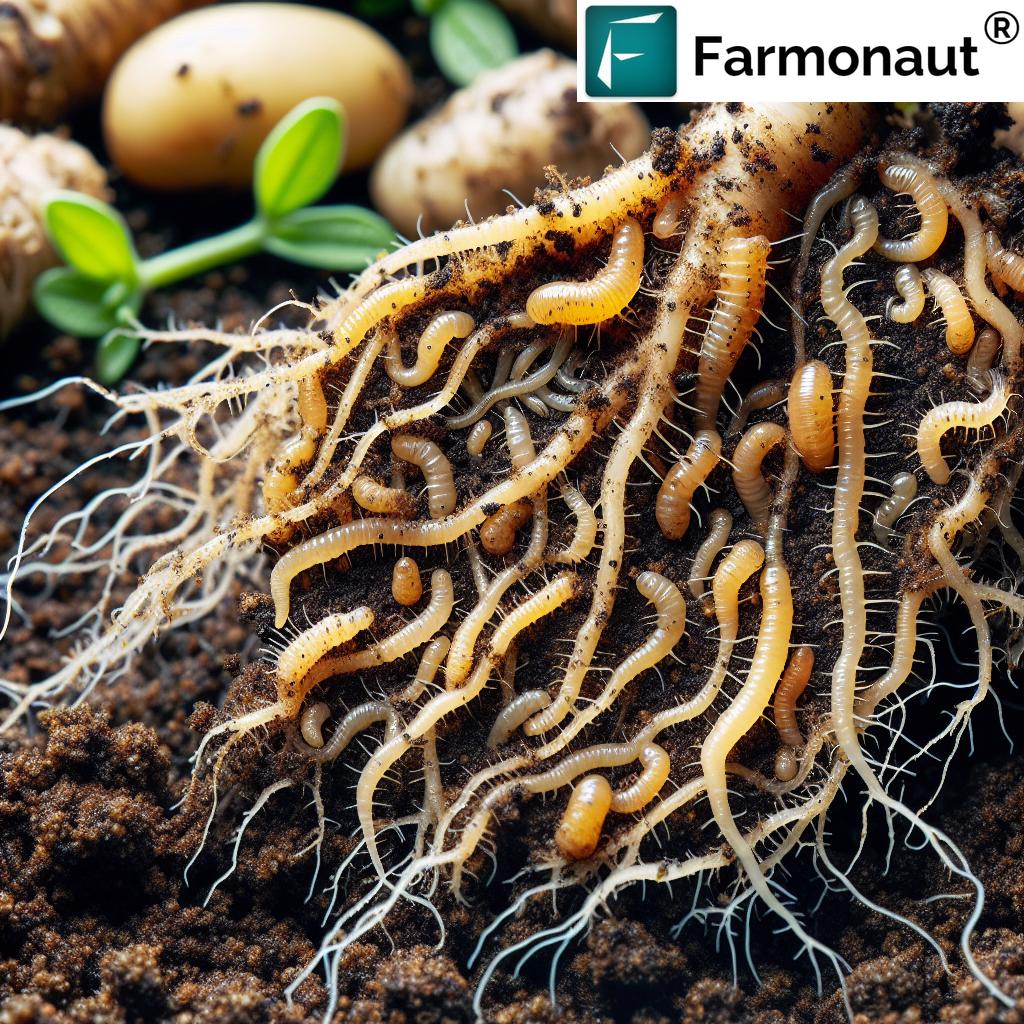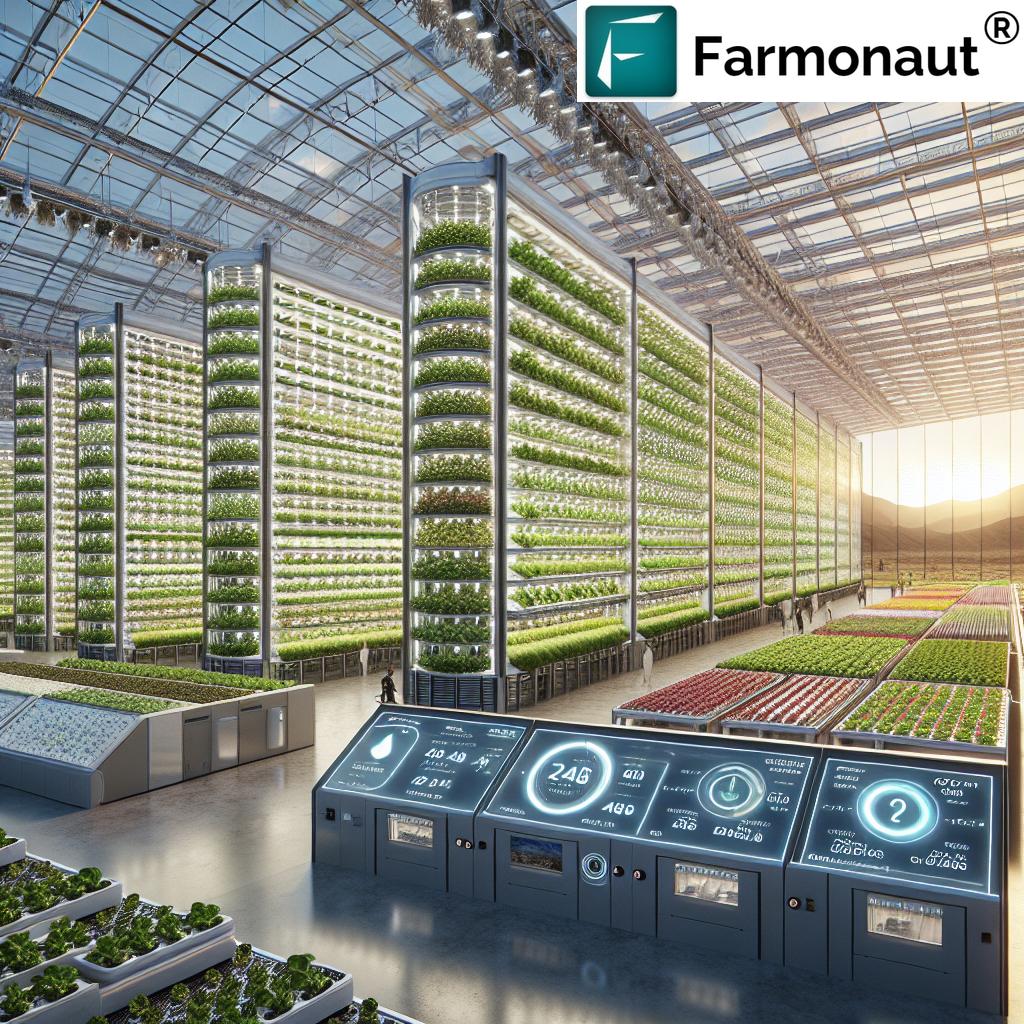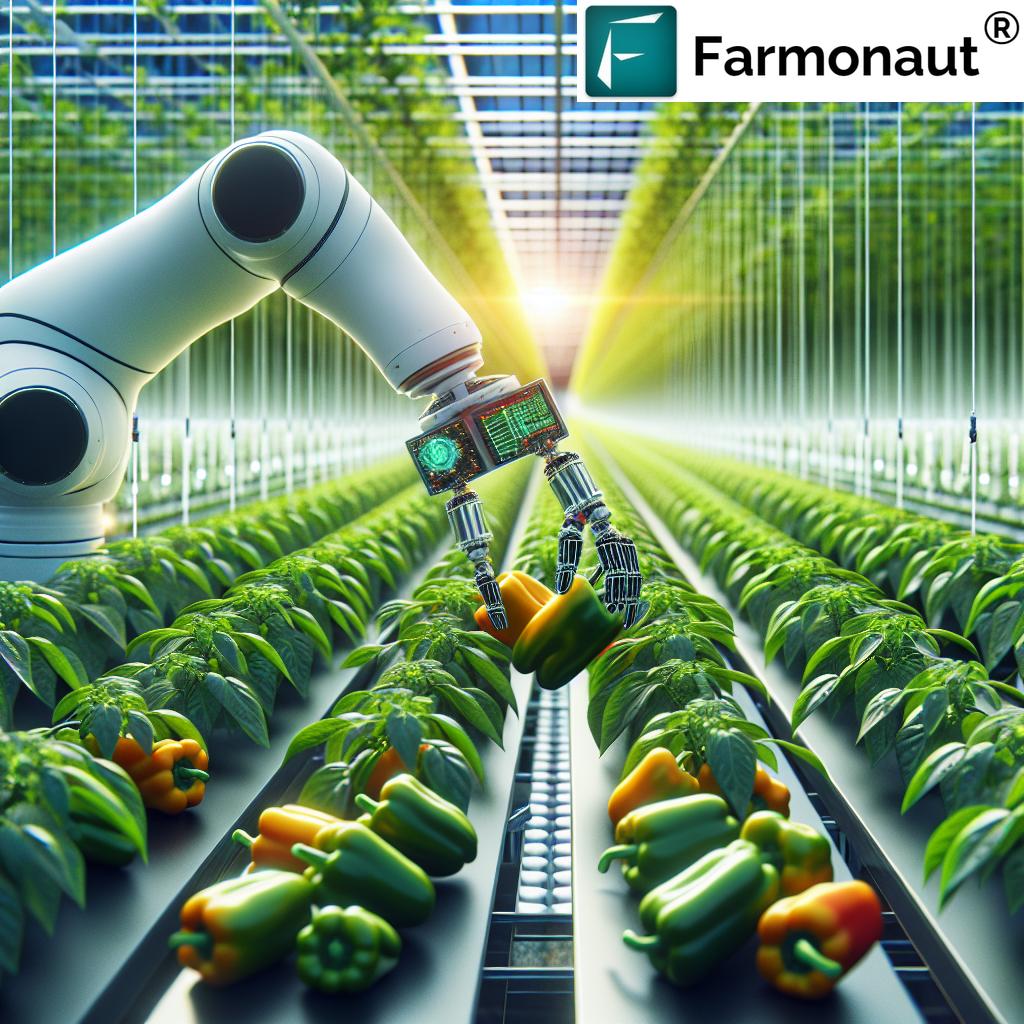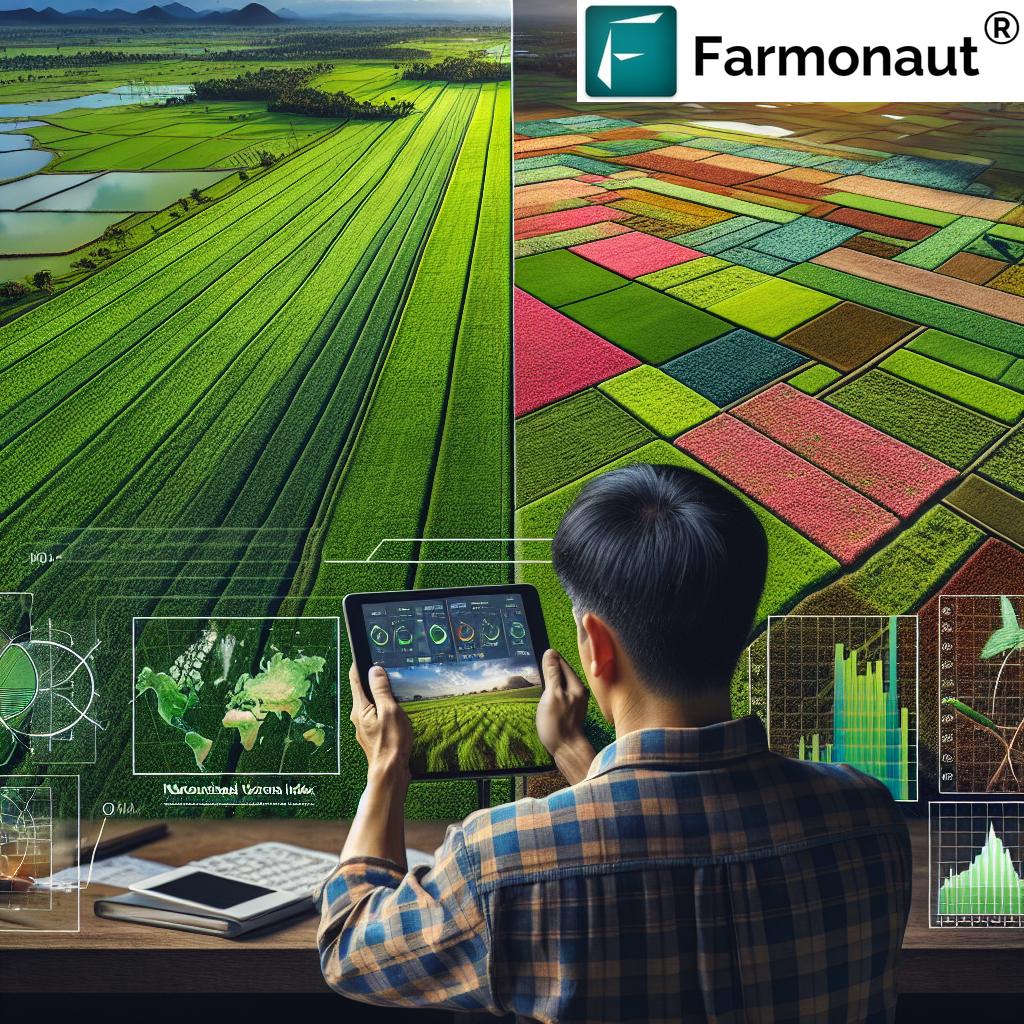Agriculture Asset Tracking: Boost Yields with Smart Tech
Summary:
Advancing Agriculture in 2025: The Crucial Role of Asset and Activity Tracking in Farming and Forestry.
“By 2025, over 60% of large farms are projected to adopt smart asset tracking technologies for machinery and yield monitoring.”
Introduction: The Evolving Landscape of Agriculture Asset Tracking
In the rapidly advancing field of agriculture, the integration of agriculture asset tracking and advanced agriculture tracking technologies is ushering in a new era for farmers, agribusinesses, and foresters worldwide. As populations grow and demands for food, fiber, and sustainable resources intensify, precise monitoring and resource management have become essential.
By 2025, digital transformation across the agriculture and forestry sectors will be driven by a powerful combination of data, AI, IoT sensors, satellite imagery, and blockchain-based traceability. These innovative technologies are turning traditional practices into efficient, transparent, and sustainable operations. The adoption of farm machinery tracking, yield farming tracking, and agriculture experiment tracking isn’t just about convenience—it’s now a strategic imperative for survival and growth in a complex global value chain.
“Smart agriculture tracking systems can increase farm productivity by up to 20% through real-time asset and yield data analysis.”
Why Agriculture Asset Tracking Matters by 2025
Agriculture asset tracking is reshaping the landscape of modern farming and forestry. The upcoming years will see an even greater need for data-driven insights, resource optimization, and operational transparency. With climate challenges, volatile markets, regulatory demands, and resource constraints, farmers and managers must harness technology to:
- Maximize crop yields and minimize risk through real-time monitoring and data analysis
- Reduce input costs and increase resource use efficiency via targeted application
- Ensure compliance with growing environmental standards and market requirements
- Enhance traceability for end-to-end transparency in global agricultural supply chains
- Build resilience to market volatility, climate variability, and pest outbreaks
Let’s explore how asset, machinery, yield, and experiment tracking are revolutionizing the heart of agriculture.
Agriculture Asset Tracking: Optimizing Value and Security
What is Agriculture Asset Tracking?
Agriculture asset tracking involves the deployment of technologies such as GPS, RFID, IoT sensors, and advanced software platforms to monitor the location, status, and performance of all valuable resources within a farm or forestry operation. Assets typically include:
- Tractors and vehicles
- Irrigation systems and pumps
- Storage facilities, silos, and warehouses
- Livestock and mobile farm animals
- Seed, fertilizer, and pesticide inventories
- Forestry equipment: harvesters, skidders, forwarders
Key Benefits of Asset Tracking Systems
- Improved Asset Utilization: Real-time tracking ensures optimal deployment and scheduling, reducing idle time and unnecessary purchases.
- Theft Prevention and Recovery: GPS-based systems offer timely alerts and precise location recovery to reduce loss and insurance claims.
- Maintenance Efficiency: Sensor data supports predictive maintenance, lowering repair costs and minimizing equipment downtime.
- Stock and Inventory Control: Monitoring input inventories ensures availability for key operations—avoiding overstocking, stockouts, or delays in planting and harvesting.
Asset tracking in forestry is particularly valuable for monitoring heavy equipment across vast, remote terrain, ensuring that harvesting is efficient, transparent, and as sustainable as possible. With sustainability certification and regulatory compliance becoming prerequisites for market access, comprehensive tracking systems are a necessity in forest management.
Modern Technologies for Asset Tracking
- IoT Sensors: Real-time environmental, equipment, and inventory data
- Advanced Software Platforms: Seamless dashboard visualization, real-time analytics, and reporting
- GPS Tracking: Location, motion tracking, and geofencing for assets
- Blockchain Integration: Immutable activity logs for regulatory compliance and supply chain traceability
As we move toward a digital agriculture ecosystem, these layers of data blend to provide a comprehensive, actionable view of resource utilization and asset flow.
Farm Machinery Tracking: Enhancing Precision and Efficiency
The Role of Machinery Tracking in Precision Agriculture
Farm machinery tracking entails equipping tractors, harvesters, sprayers, drones, and other mobile assets with GPS and sensor arrays, which continuously capture operational data such as:
- Location and route
- Fuel consumption and equipment status
- Speed, working hours, and idle time
- Input application rates for seeding, fertilizing, or spraying
In 2025, this capability is the backbone of precision agriculture, enabling farmers and managers to:
- Assign machinery in real time based on field needs and terrain conditions
- Reduce overlap or missed areas in key operations (planting, spraying, harvesting)
- Integrate with farm management systems to optimize input utilization
- Facilitate compliance with environmental and safety regulations
Farm Machinery Tracking: Productivity and Environmental Benefits
- Productivity: Linking machinery performance with field and crop conditions allows for increased output and reduced labor costs.
- Labor Management: Accurate time logs support efficient labor scheduling and payroll, crucial as rural labor availability tightens.
- Regulatory Compliance: Ensures correct application of fertilizers and chemicals, supporting sustainability and food safety certifications.
- Enabling Automation: Machinery tracking is a prerequisite for safe, remote supervision of autonomous tractors or drones, a growing trend for large-scale and commercial operations.
By collecting and analyzing machine data, agronomists and farm managers support actionable decision-making, identify operational bottlenecks, and maximize asset utilization.
Yield Farming Tracking: Maximizing Crop Output with Data
What is Yield Farming Tracking?
Yield farming tracking represents a suite of technologies—including satellite imagery, drones, soil and crop sensors, and farm management software—designed to monitor and optimize all phases of production, from planting to harvest. This empowers farmers to make strategic decisions that enhance yields while reducing resource use and risk.
Yield monitoring systems collect granular data for each field—including growth stage, canopy vigor, soil moisture, pest or disease hotspots, and weather response. This unlocks powerful capabilities like:
- Site-Specific Input Application: Apply seeds, water, and fertilizer only where needed, based on real geospatial data
- Yield Mapping and Analytics: Analyze spatial variability to address low-yielding areas and optimize output
- Early Risk Detection: Recognize stress factors such as pests, diseases, or drought and act promptly
- Traceability and Certification: Satisfy compliance for sustainability or export markets with accurate, transparent records
- Profitability Insights: Match resource investments with tangible outcomes for ongoing improvement
In a connected, integrated farm of 2025, yield farming tracking not only elevates productivity and sustainability but also builds transparency—critical as consumers and buyers demand proof of origin, ethical standards, and low environmental footprint.
Yield Tracking: Technologies That Empower Modern Agriculture
- Multispectral Satellite Imagery: Monitors daily changes in crop health for precision interventions
- Drone Data: Pinpoints field variations and supports variable rate application
- Soil Sensors: Track moisture, nutrients, and soil temperature
- Farm Management Apps: Centralize yield and input data for year-on-year benchmarking and ROI analysis
- AI-Driven Insights: Transform raw data into clear, actionable recommendations for improved decision-making
Agriculture Experiment Tracking: Driving Innovation and Adaptation
Why Experiment Tracking is Critical in 2025
Agriculture experiment tracking means systematically recording and analyzing data from trials and pilot projects. Whether testing a new crop variety, fertilizer, irrigation regime, pest management approach, or climate adaptation technique, detailed, repeatable records are essential for:
- Accelerating R&D and Innovation: Shorten the feedback loops between research, extension, and farmer adoption
- Evidence-Based Decision-Making: Evaluate the effectiveness, risks, and adaptability of innovative practices before scaling
- Collaboration and Data Sharing: Use cloud platforms for real-time results sharing among farmers, agronomists, and scientists
- Regulatory and Certification Compliance: Provide comprehensive data for government approvals, organic standards, and market entry
Technologies supporting agriculture experiment tracking include:
- Mobile Data Collection Apps: Seamlessly record trial variables, photos, and notes in the field
- Sensor Arrays and Loggers: Automatically capture weather, soil, and crop response data
- Blockchain: Secure, timestamped activity logs for reproducibility and intellectual property records
- Satellite Integration: Provide historical and ongoing data layers for comparative analytics
Modern experiment tracking systems create a robust backbone for rapid adaptation in the face of climate variability, market changes, and evolving consumer expectations.
Integrated Tracking Systems: Holistic Farm and Forestry Management
The Power of Integrated Data
By 2025, integration of agriculture asset tracking, farm machinery tracking, yield farming tracking, and agriculture experiment tracking is enabling holistic management of operations. Comprehensive platforms now house diverse data streams—resource allocation, machine activity, inventory, crop health, and experiment outcomes—under a single dashboard.
Key outcomes of integrated tracking:
- Resource Efficiency: Use inputs (seed, fertilizer, water, fuel) precisely and only as needed, reducing costs and environmental impact
- Traceability and Certification: Generate digital records that support many types of market or sustainability certifications, including blockchain-based product traceability
- Resilience to Risk: Proactively spot and address mechanical, biological, or climate-related threats before they impact yields
- Financial Inclusion: Transparent record-keeping fosters access to credit and insurance. Visit Farmonaut’s Crop Loan & Insurance Verification to learn more.
Integrated Tracking for Forestry
Forestry management also gains from integrated tracking—balancing economic harvesting with conservation mandates, and ensuring all activities are compliant with sustainability certification programs (e.g., FSC or PEFC).
The future of agriculture and forestry is an interlinked, intelligent ecosystem—enabling transparent, efficient, and profitable production while stewarding the planet’s resources.
Comparative Impact Table: Benefits of Tracking Technologies (2025)
| Tracking Technology | Estimated Yield Improvement (%) | Productivity Gain (%) | Transparency Level | Sustainability Impact (1-5) |
|---|---|---|---|---|
| GPS Machinery Tracking | 8–12% | 10–20% | High | 4 |
| IoT Sensor Asset Tracking | 5–10% | 12–18% | High | 5 |
| Remote Yield Monitoring (Satellite & Drones) | 10–15% | 15–22% | High | 5 |
| Blockchain-Based Traceability | 3–5% | 8–12% | High | 5 |
| Experiment/Data Management Platforms | 6–10% | 10–16% | Medium–High | 4 |
| Integrated Farm Management Suite | 15–25% | 20–28% | High | 5 |
*Estimates reflect industry trends and global projections for 2025 under digitally enabled precision agriculture practices.
How Farmonaut Empowers Data-Driven Agriculture
As a pioneering force in agricultural technology, Farmonaut delivers cutting-edge, satellite-based farm management solutions across Android, iOS, web/browser apps, and API. Our mission is to make precision agriculture and data-driven farming affordable and accessible to farmers worldwide, integrating advanced technology with traditional practices.
With our platform, farmers, agribusinesses, and governments gain robust capabilities in:
- Real-Time Crop Health Monitoring: Using satellite imagery for actionable insights into vegetation health, soil moisture, and resource needs
- Jeevn AI Advisory System: Personalized, AI-driven recommendations, weather forecasts, and crop management guides
- Blockchain-Based Traceability: Complete digital records for product origins, management activities, and supply chain compliance
- Fleet, Resource and Labor Management: Optimize all assets, minimize cost, and plan logistics efficiently
- Environmental and Sustainability Tools: Carbon footprint tracking for sustainable agriculture and easier certification
Our subscription-based service model supports everyone from individual smallholders to government agencies. We also offer open API access, expanding the reach of Farmonaut® data to developers, agritech companies, and research platforms.
Access Farmonaut’s Satellite & Weather API for custom integrations |
API Developer Docs
Farmonaut – Flexible, Scalable, and Tailored for Every Need
- Android, iOS, and Web Accessibility: Manage your farm from anywhere—see Android or iOS app
- Satellite Data for Smallholder and Large Estates: Affordable insights tailored to scale
- API-Based Integration: Build your custom agricultural tools or large-scale dashboards
- Subscription Pricing: Flexible packages for different operation sizes (see below!)
Challenges and Future Directions in Agriculture Asset Tracking
What Holds Back Widespread Tracking Adoption?
Despite dramatic progress, a few challenges remain on the path to universal digital tracking:
- Connectivity: Many rural zones lack reliable internet—although 5G and new satellite internet solutions are closing the gap
- Cost and Accessibility: Making advanced tracking and sensor technologies affordable for smallholder farmers worldwide
- Data Privacy and Ownership: Ensuring that farmers retain control of their data and that it is not misused by third parties
- Interoperability: Connecting diverse platforms and devices—a key technical challenge as each manufacturer or app may use different formats/protocols
The good news? The 2025 horizon brings answers: AI for smarter analytics and user guidance, blockchain for secure traceability, miniaturized sensors for affordable deployment, and seamless integration across cloud-based platforms. As digital infrastructure matures, tracking will be as accessible on small family farms as on corporate megafarms.
FAQ: Agriculture Asset Tracking and Smart Farming in 2025
1. What is agriculture asset tracking and why is it important?
Agriculture asset tracking is the use of GPS, IoT sensors, and software platforms to monitor equipment, inventory, and other resources across the agriculture value chain. It’s crucial for optimizing resource use, preventing losses, enabling timely maintenance, ensuring regulatory compliance, and enhancing yield and profitability, especially by 2025, as digital agriculture becomes standard.
2. How does farm machinery tracking improve efficiency?
Farm machinery tracking provides real-time data on fuel use, machine location, operating hours, and input application rates. This improves task scheduling, reduces idle time, identifies bottlenecks, and enables precision application of seeds, water, and crop protection for maximum yield and minimum resource waste.
3. What role does yield farming tracking play in risk management?
Yield farming tracking uses satellite, drones, and in-field sensors to monitor spatial yield variation, detect stress early, and predict risks related to weather, disease, or pests. By overlaying real-time and historical data, farmers can proactively mitigate risk, adjust strategy, and sustain consistent crop output.
4. Why is blockchain used in agriculture tracking?
Blockchain ensures the integrity of data logs in agriculture tracking by creating immutable, timestamped records. This supports product traceability, supply chain transparency, regulatory compliance, and certification, which are increasingly required for access to premium and international markets.
5. How can smallholder farmers benefit from tracking technologies?
Affordable, user-friendly digital platforms now allow smallholder farmers to access precision farming benefits, such as improved yields, reduced input costs, and access to better markets through traceability. Farmonaut’s satellite-based solutions are designed to be scalable and cost-effective for all operation sizes.
6. Can I integrate Farmonaut data with other agriculture management software?
Yes. Farmonaut offers API access, enabling agricultural businesses, researchers, and software developers to integrate satellite and weather data into custom platforms or third-party farm management systems.
Explore Farmonaut’s API here.
7. How do I get started with Farmonaut?
Download the Farmonaut app for Android, iOS, or access the web platform. Choose a subscription plan that fits your operation and start tracking your farm’s health, assets, and activities.
Conclusion: The Road to Sustainable, Transparent Agriculture
The transition to agriculture asset tracking, farm machinery tracking, yield farming tracking, and agriculture experiment tracking is defining the next era in farming and forestry. By connecting resources, activities, and outputs with advanced data-driven systems, we unlock new levels of efficiency, sustainability, and profitability across the global value chain.
The landscape of 2025 and beyond rewards farms and foresters that harness innovative tracking technologies and platforms, such as those provided by Farmonaut. These tools build resilience, support compliance, and generate the transparency that markets, consumers, and the planet demand. As we embrace a future of digitally connected and intelligent farming, the rewards—higher yields, lower costs, environmental stewardship, and thriving rural economies—are within reach for all who choose to lead.













